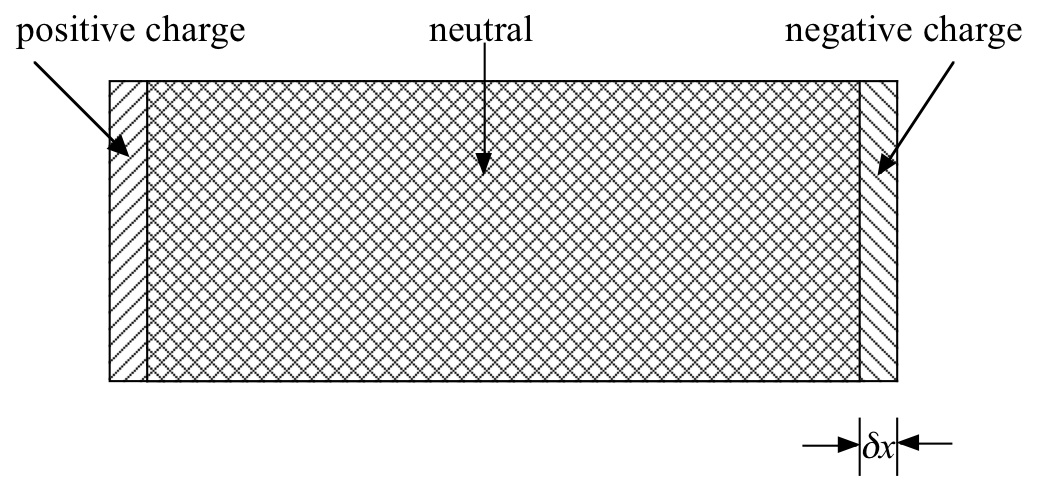Problem 1 [15 points]
The longitudinal plasma oscillations of the electric field in a conductor at frequency ω = ωp can be viewed physically in terms of the following simple model:
Consider a slab of conductor in which the charges consist of a fixed uniform background density of positive ionic charge, +eN, and an equal, but moveable, uniform density of negative electonic charge, −eN. When the negative charge density sits exactly on top of the positive charge density the system is neutral everywhere and the electric field inside the conductor is E = 0. Now displace the center of mass of the negative charge density by an amount δx, as shown in the sketch below.

a) What surface charge density σ builds up on the ends of the conductor?
b) What is the E field created inside the conductor by this σ? (hint: it is just like a parallel plate capacitor) Express E as a function of δx and the density of electrons N.
c) Assuming that the electrons move together as a rigid body, what is the total force on the electrons due to the electric field E of part (b)? Write Newton's equation of motion for the center of mass of the electrons and show that the solution is an oscillation of δx with frequency ωp, where ωp is the plasma frequency discussed in lecture.
This oscillation in δx results in an oscillation in the uniform E of part (b), as well an an oscillation in the surface charge σ. This is called the plasma oscillation.
Problem 2 [15 points]
Consider a semi-infinite dielectric material with a real, positive, dielectric constant ε > 1 and μ = 1. The surface of the dielectric is the xy plane at z=0, and the dielectric fills all of space below this plane (i.e. z<0). A vacuum is above the plane (i.e. z>0). A plane polarized simple harmonic electromagnetic qave of frequency ω is traveling inside the dielectric in the x-direction, as in the sketch below (that is, the wavevector k in the dielectric is in the x-direction).

a) Write down the bounadary conditions that determine how the amplitudes of the electromagnetic fields are related at the interface between the dielectric and the vacuum. What do these boundary conditions imply about the relation between the frequencies and wavevectors of the electromagnetic fields inside and outside the dielelectric?
b) Show that the electromagnetic fields decay exponentially as one moves in the z-direction away from the surface of the dielectric into the vacuum (hint: find what is the wavevector of the wave in the vacuum; it will not be purely in the x-direction).